-
 Bitcoin
Bitcoin $109,058.5326
-0.67% -
 Ethereum
Ethereum $2,553.3914
-1.56% -
 Tether USDt
Tether USDt $1.0004
0.01% -
 XRP
XRP $2.2311
-2.72% -
 BNB
BNB $658.4030
-0.74% -
 Solana
Solana $150.4006
-2.89% -
 USDC
USDC $1.0000
0.01% -
 TRON
TRON $0.2870
1.26% -
 Dogecoin
Dogecoin $0.1671
-3.94% -
 Cardano
Cardano $0.5819
-3.67% -
 Hyperliquid
Hyperliquid $38.9110
-4.28% -
 Sui
Sui $2.9262
-3.28% -
 Bitcoin Cash
Bitcoin Cash $481.7213
-4.33% -
 Chainlink
Chainlink $13.3658
-3.40% -
 UNUS SED LEO
UNUS SED LEO $9.0445
0.35% -
 Avalanche
Avalanche $18.0828
-3.99% -
 Stellar
Stellar $0.2400
-2.09% -
 Toncoin
Toncoin $2.8111
-3.00% -
 Shiba Inu
Shiba Inu $0.0...01157
-3.51% -
 Litecoin
Litecoin $87.9190
-3.80% -
 Hedera
Hedera $0.1556
-2.74% -
 Monero
Monero $321.6492
-3.46% -
 Polkadot
Polkadot $3.4434
-4.49% -
 Dai
Dai $0.9999
-0.02% -
 Ethena USDe
Ethena USDe $1.0001
-0.02% -
 Bitget Token
Bitget Token $4.4642
-2.92% -
 Uniswap
Uniswap $7.3673
-3.63% -
 Pepe
Pepe $0.0...09790
-7.15% -
 Aave
Aave $269.7432
-3.24% -
 Pi
Pi $0.4830
-3.91%
Do technical indicators work for Bitcoin?
Technical indicators like RSI, MACD, and moving averages help Bitcoin traders spot trends, reversals, and overbought/oversold conditions, but they work best when combined with other analyses due to market volatility and external influences.
Jul 04, 2025 at 02:14 pm
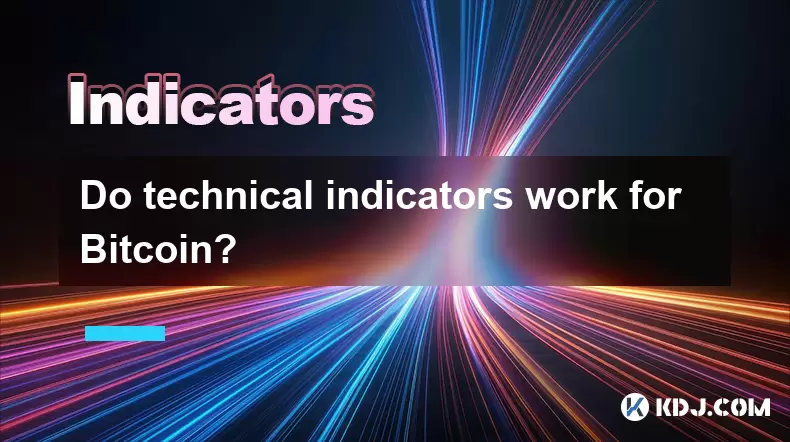
Understanding Technical Indicators in Cryptocurrency
Technical indicators are mathematical calculations based on historical price, volume, or open interest data used to forecast future price movements. In the context of Bitcoin, these tools are widely adopted by traders aiming to identify trends, reversals, and potential entry or exit points. While some critics argue that cryptocurrency markets are too volatile for traditional technical analysis, many seasoned traders rely heavily on these tools to make informed decisions.
The core idea behind using technical indicators is that they can reveal patterns that are not immediately visible from raw price charts. This includes momentum shifts, overbought or oversold conditions, and trend strength. However, it's important to note that no single indicator guarantees success, especially in a market like Bitcoin where external factors such as regulatory news or macroeconomic events can cause sudden price swings.
Commonly Used Technical Indicators for Bitcoin Trading
Traders use a variety of technical indicators when analyzing Bitcoin’s price action. Some of the most popular ones include:
- Moving Averages (MA): These help smooth out price data to form a clearer picture of the trend. The Simple Moving Average (SMA) and Exponential Moving Average (EMA) are commonly applied.
- Relative Strength Index (RSI): This oscillator measures the speed and change of price movements to determine overbought or oversold levels. An RSI reading above 70 suggests overbought conditions, while below 30 indicates oversold territory.
- Bollinger Bands: These bands help assess volatility and identify potential price extremes. When the price touches the upper band, it may signal overbought conditions; touching the lower band could suggest an oversold scenario.
- MACD (Moving Average Convergence Divergence): This tool helps detect changes in momentum and potential trend reversals. It consists of two moving averages and a histogram that visualizes the difference between them.
Each of these indicators provides unique insights but works best when combined with others to confirm signals.
Backtesting Technical Indicators on Bitcoin Price Data
Before applying any technical indicator to live trading, backtesting is essential to evaluate its effectiveness. Backtesting involves applying an indicator to historical Bitcoin price data to see how well it would have predicted past price movements.
For example, if you're testing the RSI strategy on Bitcoin, you might look at historical RSI values and see how often a drop below 30 preceded a price rebound. A successful backtest doesn’t guarantee future performance, but it does offer insight into how the indicator behaves under different market conditions.
Tools like TradingView, Python libraries (e.g., pandas, mplfinance), and platforms like Binance’s historical data API allow traders to perform thorough backtests. It’s crucial to account for slippage and transaction fees during backtesting to get realistic results.
Limitations and Risks of Using Technical Indicators for Bitcoin
Despite their popularity, technical indicators come with limitations when applied to Bitcoin trading:
- Market manipulation: Due to relatively low liquidity compared to traditional markets, Bitcoin can be subject to sharp, unpredictable moves caused by whale transactions or pump-and-dump schemes. These anomalies can distort technical signals.
- Lagging nature: Most indicators are based on past data and therefore tend to lag behind real-time price action. This delay can result in missed opportunities or false signals.
- Overreliance: Relying solely on technical indicators without considering fundamentals or news events can lead to poor decision-making. Bitcoin is influenced by geopolitical developments, regulatory updates, and macroeconomic trends.
To mitigate these risks, traders should combine technical analysis with other forms of market evaluation, including sentiment analysis and on-chain metrics.
How to Combine Technical Indicators for Better Accuracy
Using multiple indicators together can enhance accuracy by confirming or filtering out false signals. Here’s how to effectively combine them:
- Use trend-following and momentum indicators together: For instance, apply EMA crossovers to identify the trend direction and RSI to gauge whether the asset is overbought or oversold within that trend.
- Combine oscillators with volatility indicators: Pairing RSI with Bollinger Bands can provide better timing for entries and exits. When RSI hits oversold and the price reaches the lower Bollinger Band, it might indicate a strong buying opportunity.
- Cross-check signals across timeframes: Analyze Bitcoin on multiple timeframes — for example, daily for trend and hourly for precise entries. A bullish MACD signal on the daily chart supported by a bullish candlestick pattern on the hourly chart increases confidence.
Avoid cluttering your chart with too many indicators. Instead, focus on a few that complement each other and align with your trading style.
Frequently Asked Questions
1. Can technical indicators predict Bitcoin crashes?
No technical indicator can accurately predict sudden market crashes. While certain signals may highlight increasing bearish momentum or overextended conditions, external factors such as regulatory crackdowns or global financial events often drive sharp declines, which cannot be fully captured by technical analysis alone.
2. Should beginners use technical indicators for Bitcoin trading?
Beginners can benefit from learning technical indicators, but they should start with simple tools like moving averages and RSI before progressing to more complex ones. It's also crucial to practice with demo accounts or paper trading to understand how these indicators behave without risking real capital.
3. Are some technical indicators more effective than others for Bitcoin?
Effectiveness varies depending on market conditions and trader preferences. Momentum-based indicators like RSI and MACD tend to perform well in ranging markets, while moving averages are more suited for trending environments. Ultimately, the key is to find a combination that aligns with your strategy and risk tolerance.
4. Do professional Bitcoin traders rely solely on technical indicators?
Most professional traders use a blend of technical, fundamental, and sentiment analysis. Technical indicators are part of a broader toolkit rather than standalone decision-makers. On-chain analytics, macroeconomic indicators, and social media sentiment are also integral parts of a comprehensive trading strategy.
Disclaimer:info@kdj.com
The information provided is not trading advice. kdj.com does not assume any responsibility for any investments made based on the information provided in this article. Cryptocurrencies are highly volatile and it is highly recommended that you invest with caution after thorough research!
If you believe that the content used on this website infringes your copyright, please contact us immediately (info@kdj.com) and we will delete it promptly.
- Bitcoin's Pattern Break: Are HODLers the Key to the Next Surge?
- 2025-07-04 18:50:12
- Meme Coins, Crypto Tokens, and Joke Creation: A New Yorker's Take
- 2025-07-04 18:30:12
- Level Up Your Lawn: Grass Seeds, Garden Experts, and the £1 Coin Hack!
- 2025-07-04 18:30:12
- Sui Price Surges Amid Lion Group's Treasury Move: What's Next?
- 2025-07-04 16:30:13
- BLAST Price Bounces Back After Token Unlock: Is the Rally Real?
- 2025-07-04 17:10:16
- Wormhole, Coinbase, and Interoperability: A New Era for Crypto?
- 2025-07-04 16:30:13
Related knowledge
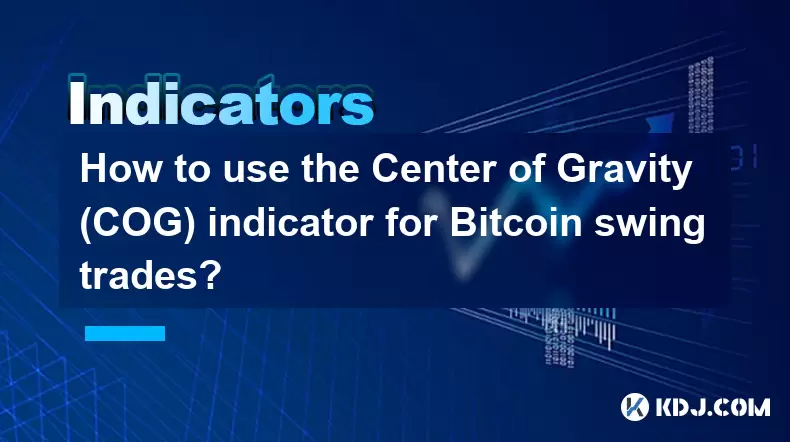
How to use the Center of Gravity (COG) indicator for Bitcoin swing trades?
Jul 04,2025 at 06:21pm
Understanding the Center of Gravity (COG) IndicatorThe Center of Gravity (COG) indicator is a technical analysis tool primarily used to identify potential trend reversals and momentum shifts in financial markets, including cryptocurrency trading. Unlike traditional oscillators like RSI or MACD, the COG focuses on calculating the weighted average price o...
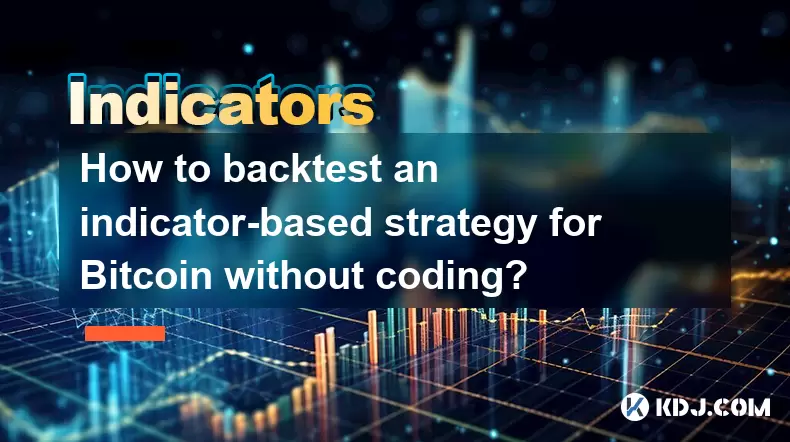
How to backtest an indicator-based strategy for Bitcoin without coding?
Jul 04,2025 at 06:50pm
Understanding Backtesting in Cryptocurrency TradingBacktesting is the process of evaluating a trading strategy by applying it to historical data to see how it would have performed. In the context of Bitcoin, backtesting allows traders to test their indicator-based strategies using past price movements and volume data. This helps identify whether a strat...

What is indicator confluence and why is it important for Bitcoin trading?
Jul 04,2025 at 03:14pm
Understanding the Concept of Indicator ConfluenceIndicator confluence refers to the alignment or agreement between multiple technical indicators when analyzing a financial asset, such as Bitcoin. Instead of relying on a single indicator to make trading decisions, traders use confluence to increase the probability of successful trades by ensuring that di...
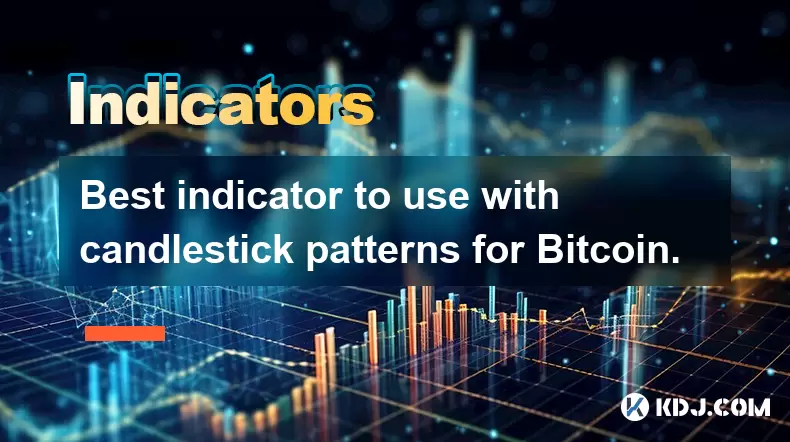
Best indicator to use with candlestick patterns for Bitcoin.
Jul 04,2025 at 12:36pm
Understanding the Role of Indicators with Candlestick PatternsIn the world of cryptocurrency trading, especially when dealing with Bitcoin, technical analysis plays a crucial role in identifying potential price movements. Traders often rely on candlestick patterns to forecast market behavior. However, these patterns alone may not always provide sufficie...

How to use the Parabolic SAR for Bitcoin trend following?
Jul 04,2025 at 05:21pm
Understanding the Parabolic SAR IndicatorThe Parabolic SAR (Stop and Reverse) is a technical analysis tool developed by J. Welles Wilder, primarily used to identify potential reversals in asset prices. In the context of Bitcoin trading, it serves as a crucial instrument for spotting entry and exit points during trending markets. The indicator appears on...
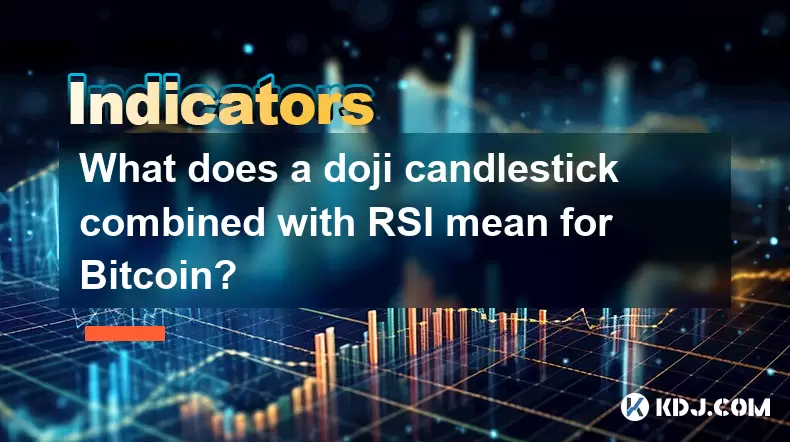
What does a doji candlestick combined with RSI mean for Bitcoin?
Jul 04,2025 at 03:08pm
Understanding the Doji Candlestick PatternA doji candlestick is a critical technical analysis pattern that signals market indecision. It forms when the opening and closing prices of an asset are nearly identical, resulting in a very small or nonexistent body with long upper and lower wicks. In the context of Bitcoin, this pattern often suggests a potent...

How to use the Center of Gravity (COG) indicator for Bitcoin swing trades?
Jul 04,2025 at 06:21pm
Understanding the Center of Gravity (COG) IndicatorThe Center of Gravity (COG) indicator is a technical analysis tool primarily used to identify potential trend reversals and momentum shifts in financial markets, including cryptocurrency trading. Unlike traditional oscillators like RSI or MACD, the COG focuses on calculating the weighted average price o...

How to backtest an indicator-based strategy for Bitcoin without coding?
Jul 04,2025 at 06:50pm
Understanding Backtesting in Cryptocurrency TradingBacktesting is the process of evaluating a trading strategy by applying it to historical data to see how it would have performed. In the context of Bitcoin, backtesting allows traders to test their indicator-based strategies using past price movements and volume data. This helps identify whether a strat...

What is indicator confluence and why is it important for Bitcoin trading?
Jul 04,2025 at 03:14pm
Understanding the Concept of Indicator ConfluenceIndicator confluence refers to the alignment or agreement between multiple technical indicators when analyzing a financial asset, such as Bitcoin. Instead of relying on a single indicator to make trading decisions, traders use confluence to increase the probability of successful trades by ensuring that di...

Best indicator to use with candlestick patterns for Bitcoin.
Jul 04,2025 at 12:36pm
Understanding the Role of Indicators with Candlestick PatternsIn the world of cryptocurrency trading, especially when dealing with Bitcoin, technical analysis plays a crucial role in identifying potential price movements. Traders often rely on candlestick patterns to forecast market behavior. However, these patterns alone may not always provide sufficie...

How to use the Parabolic SAR for Bitcoin trend following?
Jul 04,2025 at 05:21pm
Understanding the Parabolic SAR IndicatorThe Parabolic SAR (Stop and Reverse) is a technical analysis tool developed by J. Welles Wilder, primarily used to identify potential reversals in asset prices. In the context of Bitcoin trading, it serves as a crucial instrument for spotting entry and exit points during trending markets. The indicator appears on...

What does a doji candlestick combined with RSI mean for Bitcoin?
Jul 04,2025 at 03:08pm
Understanding the Doji Candlestick PatternA doji candlestick is a critical technical analysis pattern that signals market indecision. It forms when the opening and closing prices of an asset are nearly identical, resulting in a very small or nonexistent body with long upper and lower wicks. In the context of Bitcoin, this pattern often suggests a potent...
See all articles

























































































